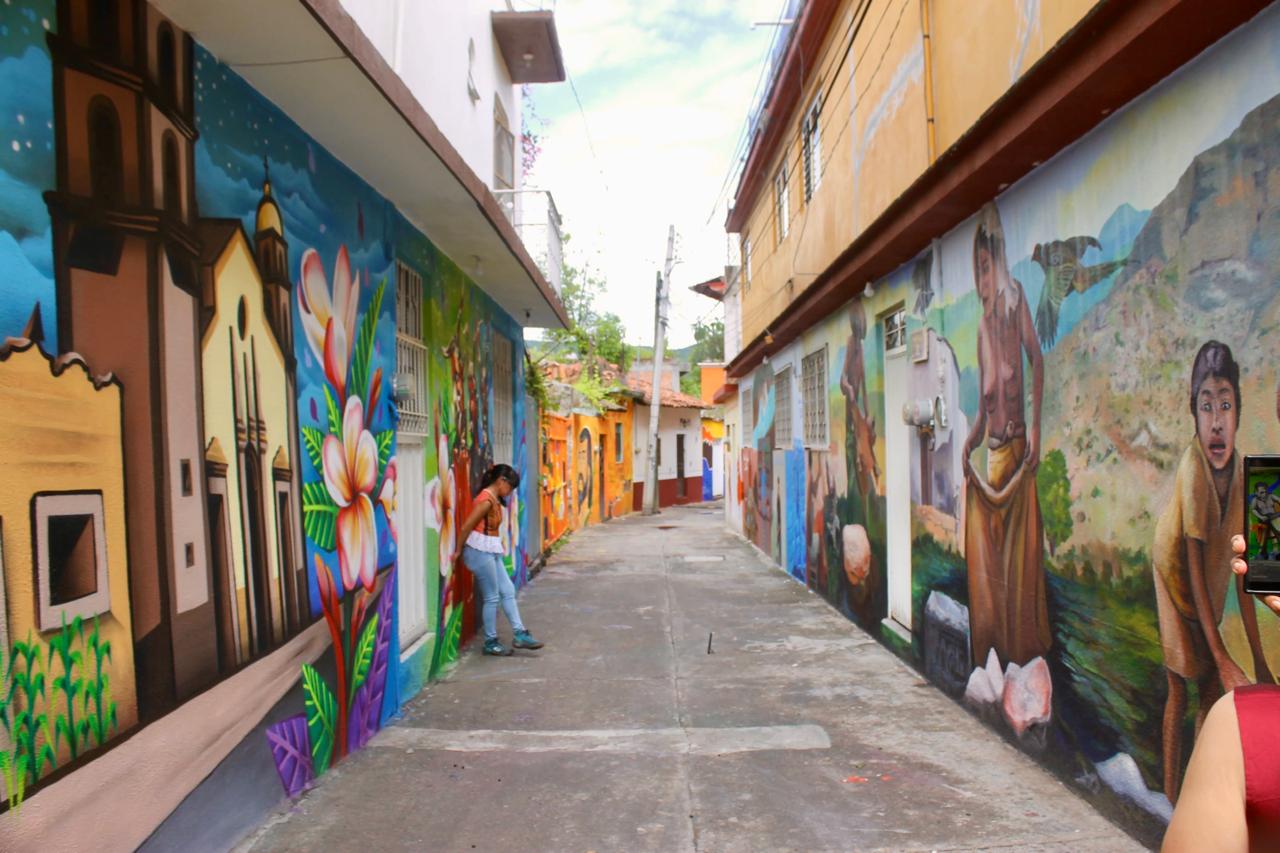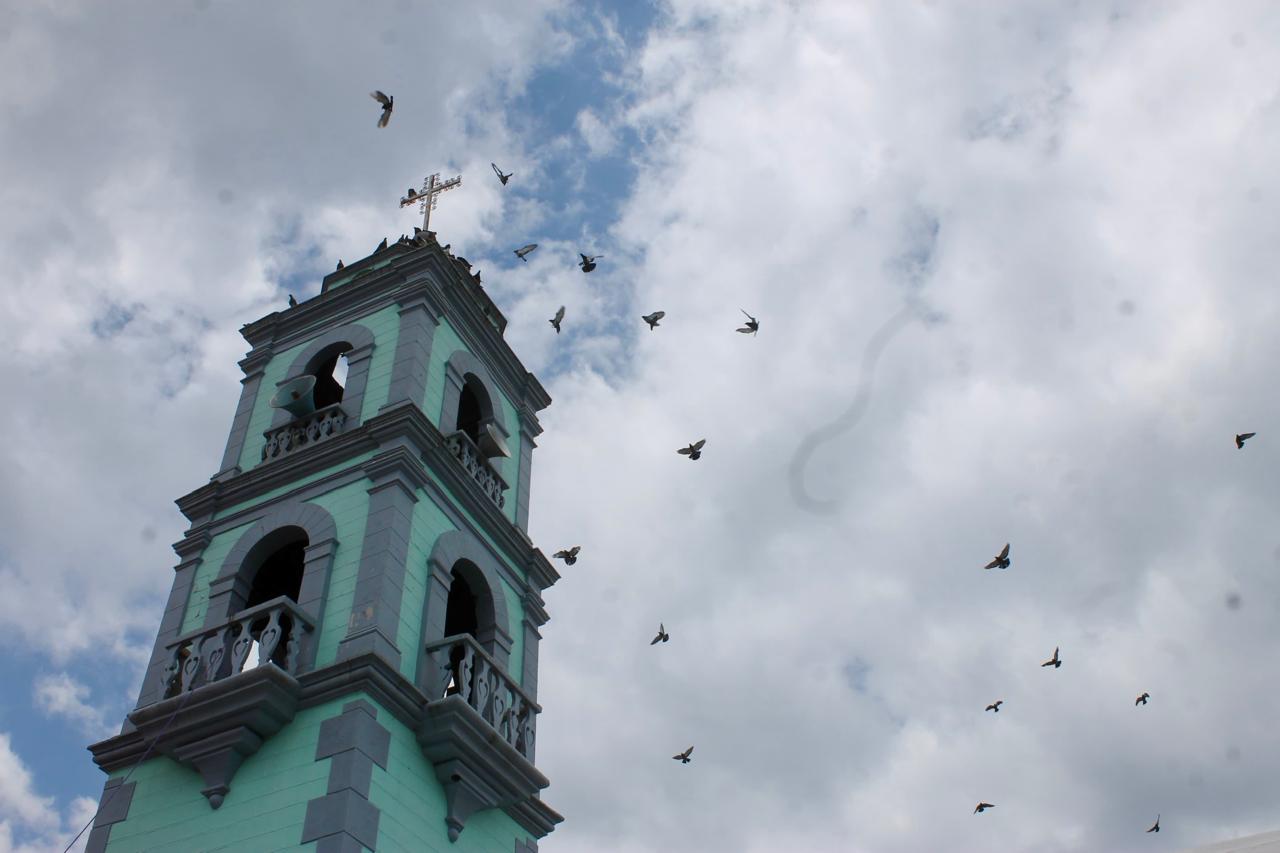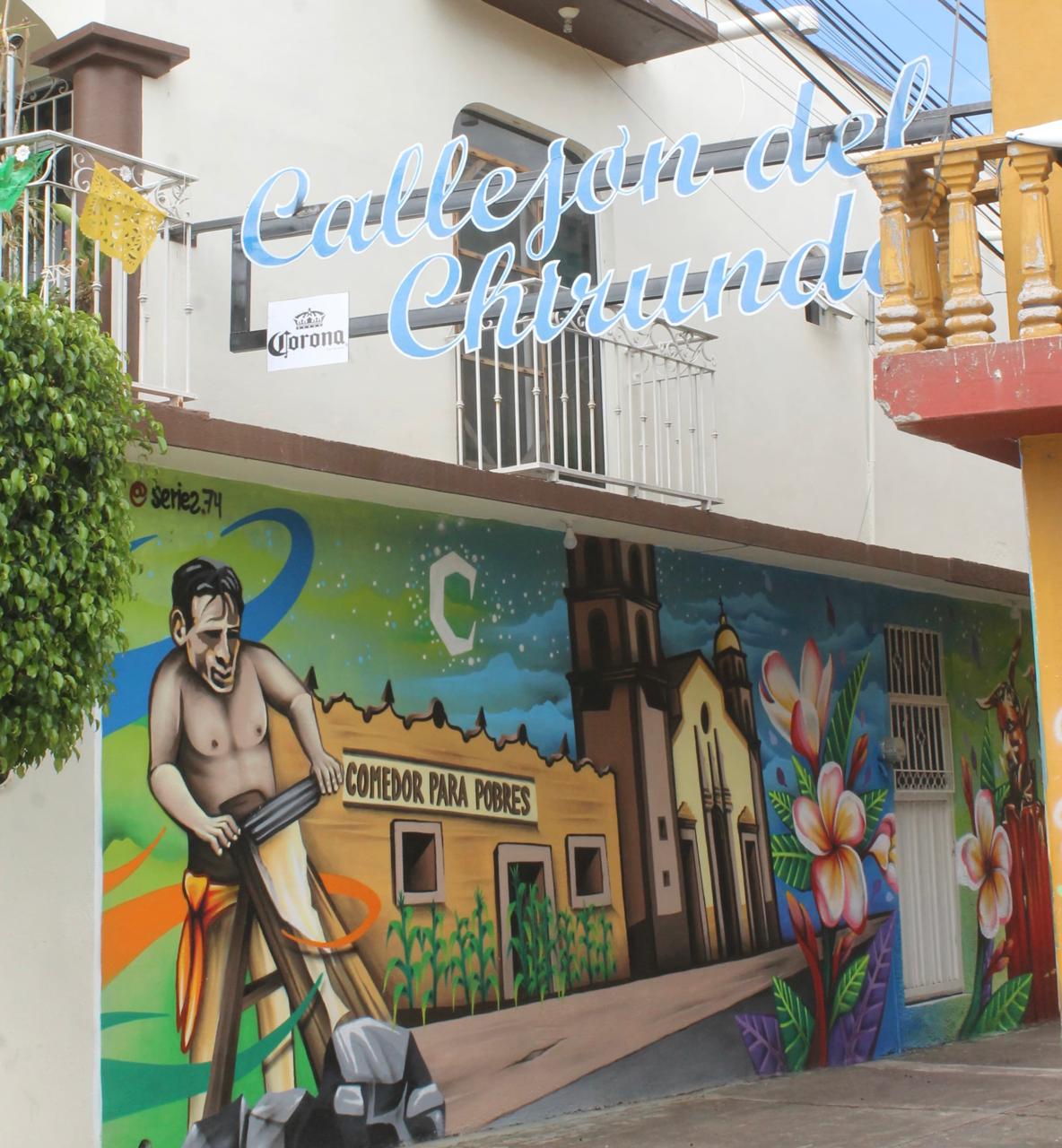
"Por este río pasaron los indígenas que habitaban los Cerros del oriente para instalarse a la otra orilla del río, obligados por los clérigos para facilitar la evangelización. Así se formó el primer barrio de Huajuapan conocido como Barrio de los Naturales desde antes de la Guerra de Independencia y que durante el sitio militar realista de 1812, resistieron a la orden de Valerio Trujano y fueron los encargados de suministrar la piedra de río que los sitiados utilizaron como balas para contener a los realistas.
"Estos indígenas se dedicaron al curtido de pieles para hacer huaraches y demás productos de las pieles y por ser un oficio que los mantenía casi todo el día metidos en el río, andaban chirundos, que fue el mote con que los identificaban los españoles y mestizos del pueblo de Huajuapan.
Los chirundos crearon rápidamente una identidad propia dentro del pueblo porque se mantuvieron al margen de los demás con sus propias costumbres y tradiciones. Con el crecimiento del pueblo pronto abarcó el barrio y así empezó la convivencia con la población huajuapeña.
Cuando en 1843 Huajuapan fue declarada Villa, el Barrio de los chirundos que veneraban a la Virgen de Guadalupe formaron parte de la Villa. En 1879 un grupo de ebanistas del barrio, encabezados por Francisco Mora iniciaron la construcción del primer templo de adobe y teja y lo dedicaron a San José Obrero, imagen católica con la que identificaron los chirundos que además eran habilidosos carpinteros.
"Este puente es un homenaje de comunicación de los huajuapeños oriundos y avecindados que los identifica como uno solo".
Fuentes:
Dr. Luis de Guadalupe Martínez Ramírez

“Through this river passed the Indigenous people who inhabited the eastern hills to settle on the other side of the river, forced by the clergymen to facilitate evangelization. Thus, the first neighborhood of Huajuapan was formed, known as Barrio de los Naturales since before the War of Independence and who during the royalist military siege of 1812, resisted the order of Valerio Trujano and were in charge of supplying the river stone that the besieged used as bullets to hold back the royalists.
These Indigenous people dedicated themselves to tanning hides to make huaraches and other leather products, and since it was a trade that kept them almost all day in the river, they went around chirundos (naked), which was the nickname given to them by the Spaniards and mestizos of the town of Huajuapan.
The chirundos quickly created their own identity within the town because they remained apart from the others with their own customs and traditions. As the town grew, it soon encompassed the neighborhood and thus began the coexistence with the huajuapeña population.
When in 1843 Huajuapan was declared a Villa, the Barrio de los chirundos, who venerated the Virgen de Guadalupe, became part of the Villa. In 1879, a group of cabinetmakers from the neighborhood, led by Francisco Mora, began the construction of the first temple of adobe and tile and dedicated it to San José Obrero, a Catholic image with which the chirundos identified, who were also skilled carpenters.
This bridge is a tribute of communication from the native and resident huajuapeños that identifies them as one.”



